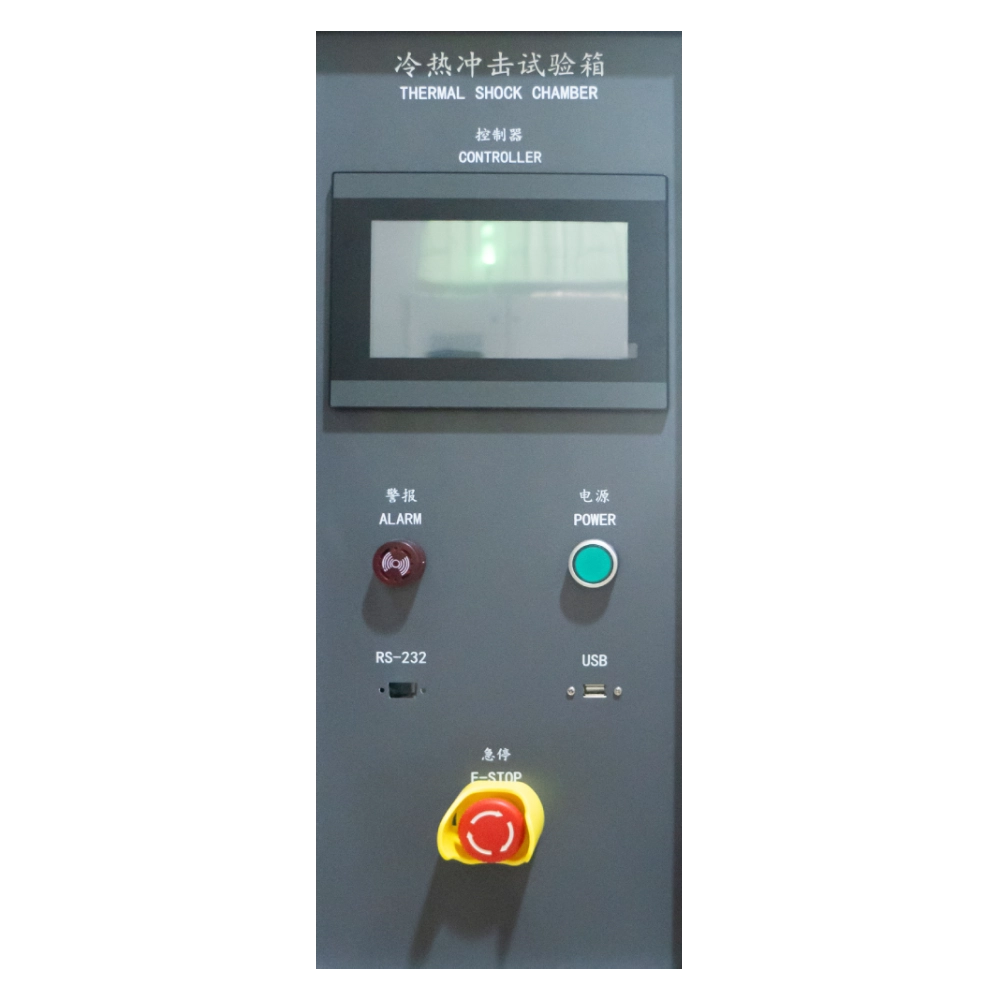Thermal shock testing is an important procedure used to check the durability and reliability of products in many industries. The heart of this testing is a device called a thermal shock chamber. This chamber can make a product experience sudden and drastic changes in temperature. This article will delve into what thermal shock chambers are, their parts, how they work, and what they’re used for. We will also dive into their pros and cons, as well as potential future advancements.
What is a Thermal Shock Chamber and Why is it Important?
A thermal shock chamber is a complex device designed to expose products to rapid changes in temperature. A temperature humidity test chamber creates harsh conditions that a product may face during its life. This helps us understand how well the product can handle these conditions. A thermal shock test chamber has an insulated testing space with advanced systems that precisely control its temperature.
Parts of a Thermal Shock Chamber and What They Do?
Thermal shock chambers have several main parts:
- Insulated Testing Area: This closed-off space is where the product is exposed to extreme temperature changes. It keeps the heat and cold from outside from affecting the testing environment.
- Temperature Control System: This comprises heating and cooling parts. They let us accurately control the temperature in the climatic chamber. This allows us to recreate many temperature conditions.
- Control Panel: This panel lets users set the temperature, watch the testing process, and collect real-time data. It’s the central command station for the thermal shock chamber.

Inside a Thermal Shock Chamber
The thermal shock chamber has several internal systems that create and maintain the needed temperature conditions:
- Cooling System: This system lowers the chamber’s temperature during transitions from a high temperature to a low temperature. It’s made up of things like refrigeration units and heat exchangers.
- Heating System: This system uses heaters to raise the chamber’s temperature during transitions from cold to hot.
- Airflow System: This system makes sure the temperature changes are dispersed throughout the environmental test chamber.
How Does a Thermal Shock Chamber Work?
Thermal shock chambers work in a few basic steps:
- Basic Operation: The primary job of a thermal shock chamber is to expose products to quick changes in temperature. It simulates the environmental extremes that products undergo during their lifespan.
- Thermal Shock: Thermal shock is a quick change in temperature that puts stress on a material and can cause it to fail. Thermal shock chambers create these temperature changes to see how well products can handle them.
- Temperature Ranges and Speeds: Thermal shock chambers can make a wide range of temperatures, from freezing (-70°C) to very hot (+200°C). How fast the temperature changes depends on what the test needs. Some chambers can change temperature quickly, in just a few seconds.
- Testing the Product: Products are placed inside the insulated testing space of the temperature test chamber. Then, they’re exposed to hot and cold temperatures based on the test plan. This helps us see how the products handle changing temperatures.

Where are Thermal Shock Chambers Used?
Thermal shock chambers are used in many industries to test products, do research, and make sure products are of high quality. They’re especially important in these sectors:
- Electronics: Thermal shock chambers test how well electronic parts and devices can handle severe temperature changes.
- Automotive: An environmental chamber plays a big role in the car industry. They test car parts like engines, sensors, and electronics. Providing the consumer with the confidence that they can handle temperature changes during driving and different weather.
- Aerospace: The aerospace industry uses environmental test chambers to test parts like avionics, satellite equipment, and airplane parts. These parts need to be able to handle extreme temperatures during launch, re-entry, and in space.
- Military: Thermal shock testing is very important for military equipment and weapons. It ensures that they can withstand harsh environments and battle situations. In these conditions, they might face rapid temperature changes and extreme hot or cold temperatures.
Thermal Shock Chambers in Product Testing and Research
Thermal shock chambers are used to test various kinds of products. These include things like consumer electronics, car parts, medical devices, and industrial machines. These tests are beneficial for companies as they help identify design issues and check the quality of materials used. They also ensure that the products are reliable and durable before they are put on the market.
Thermal shock chambers are also very important for research and development. They give us valuable information about how materials behave and help us strengthen products. They also drive innovation in industries that depend on temperature-sensitive technologies.
Standards for Thermal Shock Testing: MIL-STD, IEC, and ASTM
There are several standards and regulations for thermal shock testing to make sure it’s reliable and consistent. Some of the most common ones are:
- MIL-STD: This is a standard from the U.S. Military. It offers rules for testing how things react to the environment, including thermal shock testing of military gear.
- IEC: The International Electrotechnical Commission (IEC) makes global standards for things related to electricity and electronics. IEC 60068-2-14 is a standard that explains how to do thermal shock testing.
- ASTM: Makes standards for a lot of different testing methods, including thermal shock testing.
Why Following These Standards is Important?
Sticking to these standards ensures test results are the same each time and can be compared between different labs and industries. This makes the results of thermal shock testing more dependable. It also helps manufacturers, customers, and regulatory bodies trust the process more.
Pros and Cons of Using Thermal Shock Chambers for Testing
Benefits of Using Thermal Shock Chambers
- Product Reliability: Thermal shock testing can help find product weaknesses and design issues. This makes the product more reliable and durable in real-world conditions.
- Product Lifespan: Thermal shock testing speeds up the aging process of products. This helps manufacturers guess how long their products will last and how they’ll act under long-term temperature changes.
- Product Failure: If testing shows likely points where a product could fail, manufacturers can tweak their designs. This reduces the chance of the product failing later on.
Challenges in Thermal Shock Testing
- Test Setup: Setting up thermal shock tests requires careful planning and product preparation. The correct equipment ensures results are accurate and dependable.
- High Cost: It can cost a lot to buy and take care of thermal shock chambers. This might make them too pricey for small businesses or research groups.
- Limited Real-World Replication: Thermal shock testing can mimic extreme temperature changes. However, it can’t completely copy all the complex situations that might happen in the real world.
How Much Do Thermal Shock Chambers Cost?
The cost of thermal shock chambers can vary based on factors like size, temperature range, transition speed, and additional features. These specialized machines can cost anywhere from tens of thousands to hundreds of thousands of dollars. This reflects their advanced technology and important role in testing products and ensuring quality.
What’s Next for Thermal Shock Testing?
Technological advancements in automation, sensors, and data analysis are changing thermal shock chambers. These enhancements make the testing process more precise and allow more tests to be conducted. They provide us with more information about how materials and products react when exposed to temperature changes.
There’s also a growing demand for more precise and customized thermal shock testing for specific industries. This is leading to the development of specialized thermal shock chambers. These can recreate complex and dynamic temperature conditions with even more accuracy and reliability.
In the future, we might use thermal shock chambers for new applications. These will include renewable energy systems, advanced materials, and new technologies like quantum computing. As industries develop, thermal shock chambers will continue to be very important for making sure new products are reliable and perform well.
Conclusion: The Important Part Thermal Shock Chambers Play in Industries and Future Growth
In conclusion, thermal shock chambers are very valuable tools in the industrial world. They let us copy really hot and cold temperatures accurately and check how strong and long-lasting products are. They’re used in many industries like electronics, automotive, aerospace, and military. Following relevant standards makes testing consistent and reliable. While thermal shock testing does have its limitations, ongoing technological advancements and a focus on customization are driving its future development. As industries continue to evolve, thermal shock chambers will continue to play a key role in making sure new products are reliable and perform well.
For more environmental test chamber, Please visit: https://chiuventionclimatechamber.com
For more environmental test simulation programmes,environmental testing knowledge, instrument knowledge, and environmental testing laboratory knowledge, please contact us: [email protected]
